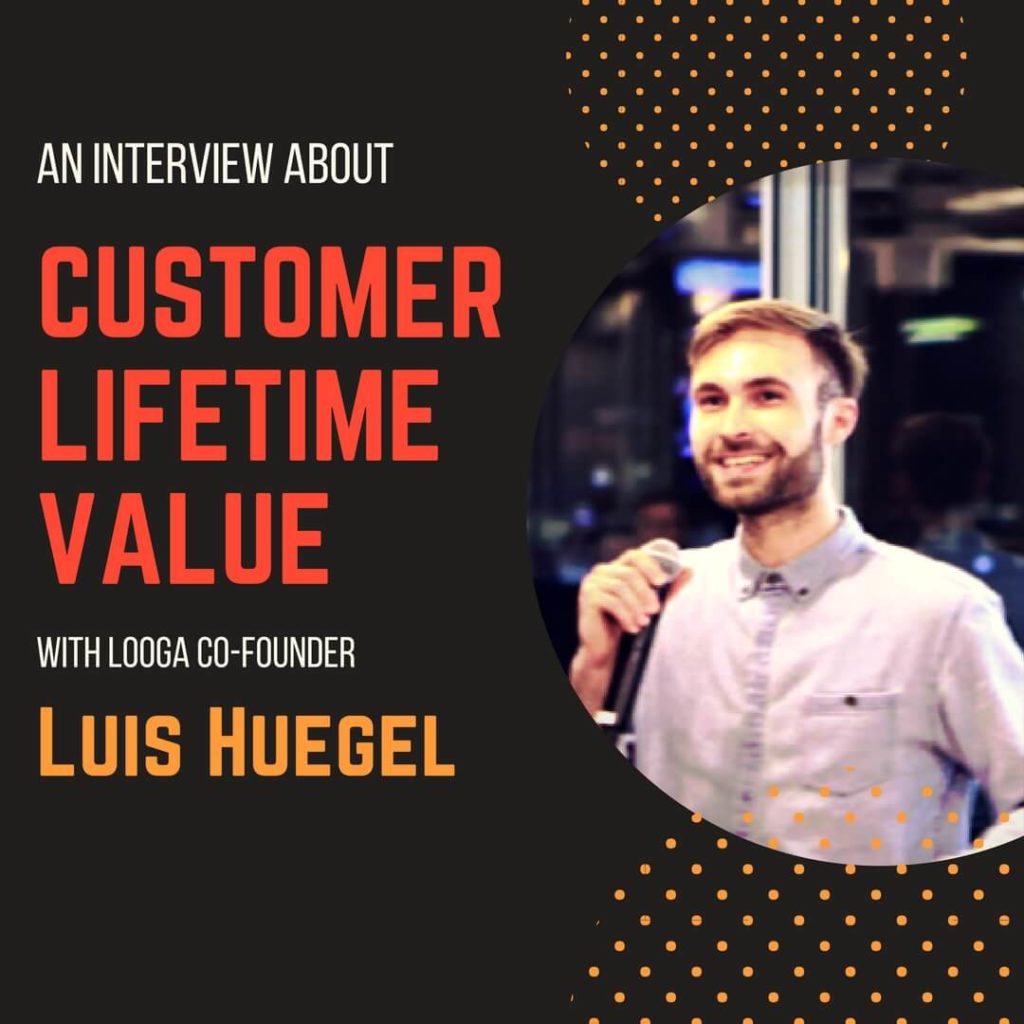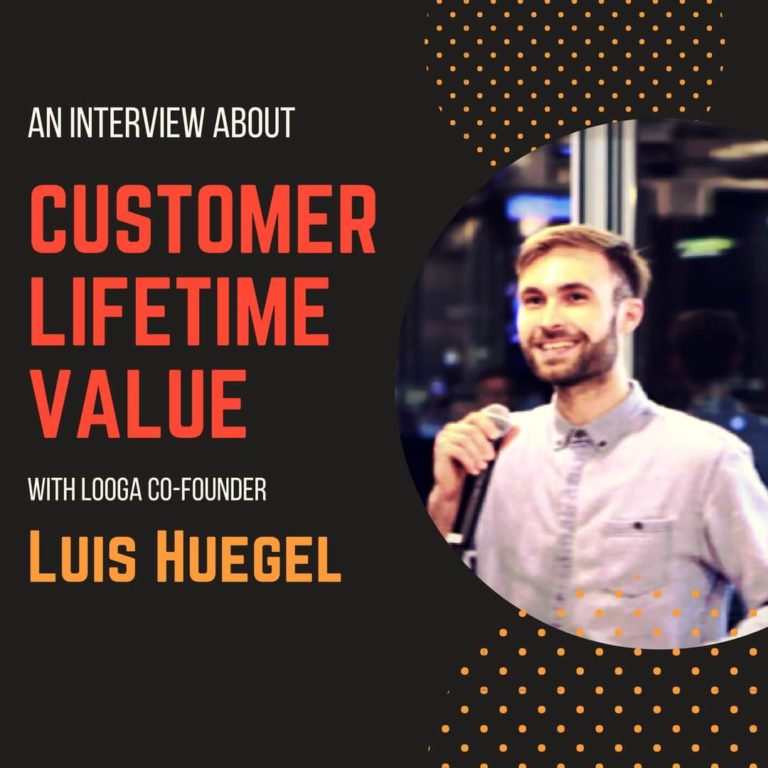An Insightful Chat About Customer Lifetime Value With Looga’s Luis Huegel
- Jan-23-2018
- Harris Sid
- 0 comments
The concept of customer lifetime value (CLV) is defined as the net profit earned from a customer over their entire life purchasing from a business. Consider this example, you spend $3 on a Facebook ad, and earn $7 from a purchase made through that ad. The lifetime value of the buyer ends with that $7. If the same buyer purchases from you over the next 5 years, their lifetime value may be well over $700.

Infographic Credit: Monetate
Increasing the life time value of your existing customers is necessary to ensure repeat purchases, especially when buyers arrive to your online store through Facebook Ads. But, not all customers may return to your Shopify store, which is where CLV optimization comes in handy.
One of these optimization techniques is discovering ‘look alike audiences’ (LLA) through Facebook Ads. Look alike audiences are those that are exactly like your existing customers in terms of demographics, characteristics, and behaviors. The best thing about lookalike audiences is that it is cheaper to advertise to them.

Enter: Looga
The whole thing fascinated me greatly and since my area of expertise had mostly been in growth hacks, I was very interested in learning about the strategies and tools people use to get the most out of CLVs. So I reached out to Luis Huegel, the co-founder of Looga.
Looga is an app that uses the Shopify API to extract data from your Shopify store and predicts customer lifetime values based on its own complex algorithms. This data is then pushed to Facebook, where it is used to create lookalike audiences that have a high CLV on their own. The conversation I had with Luis was insightful and contained valuable learnings for anyone running a Shopify store. Here it is in full:
For our readers, tell us a bit about yourself and what you do.
I’m Luis, born and raised in Berlin, and currently the Head of Product of Applicata. We are a small business intelligence & data analytics company who helps other businesses make sense of their data. I really enjoy building digital products and have been doing so for the past 8 years. Finding a problem that many people share and then coming up with a nifty technical solution to fix that problem is what it’s all about for me.

How did you come up with the idea for your Shopify app?
I have been watching and learning about the Shopify universe since the beginning of 2017, but only had the idea for Looga in August last year. Facebook released its new “value-based Audiences” feature, which gives you the possibility of attaching a customer lifetime value to each customer email you upload to Facebook. This way you can help Facebook distinguish between your best and your worst customers.
I had also been working on a standardized method to predict customer lifetime value (CLV). There are dozens of ways to calculate CLV, but I was looking for a robust algorithm that would work regardless of the business itself. As a reminder, CLV is the amount a customer is worth to you in their entire lifetime. This means it is usually more than the sum of their previous purchases, as you expect them to buy again in the future with a certain probability.
We used Shopify’s API to collect all the data we need for the CLV prediction. After running our algorithm, we push the data to Facebook as a value-based Audience. Due to the Shopify App ecosystem and the great API, we can provide out-of-the-box data science to everyone.
On what principles does Looga create lookalike and predictive audiences and how are they better when it comes to conversions compared to regular broad-interest targeting?
The key difference between our audiences and broad-interest targeting is that they are value-based. In eCommerce, you always want your customer lifetime value to be higher than your customer acquisition cost, otherwise you’re not making any money. Your best customers are said to be up to 16x more valuable than your worst customers – so should you be spending the same amount to acquire them? No, definitely not!
Our value-based Lookalike Audiences will emphasize the characteristics of your BEST customers, and find people who are similar. Even if you run a niche shop, your customers are still going to be different people with different personalities and interests. You don’t have enough data on each customer to target on such a specific level, but Facebook does. With value-based Lookalike Audiences you can benefit from the vast data that Facebook has, and make sure only the most valuable customer traits are given priority.
Lastly, Lookalike Audiences and broad-interest targeting are not mutually exclusive. You can further refine a Lookalike Audience by adding interests that describe your customers in a Saved Audience. Depending on the audience size you want to end up with (500k-1.5m is usually good), you can start with a larger percentage Lookalike Audience and then reduce it by adding interests and behaviours. I wrote about adding “Engaged Shoppers” as an interest to boost conversions here.
What’s a common mistake you see Shopify store owners make that can easily be corrected?
The most common mistake I see (and this is not only limited to Shopify), is that merchants do not understand or use some type of Marketing Funnel. A Marketing Funnel is the concept behind guiding a new customer from seeing your ad the first time to making a purchase. In reality, it usually takes more than one interaction with your store before a customer is willing to buy.
And depending on if this is the first time someone comes into contact with your brand, or they have already looked at some products on your page, the message needs to be different. Each lead starts off cold, and you need to gradually warm them up before they are hot enough to make a purchase (figuratively).
I actually wrote a piece on medium about my Marketing Funnel and a hands-on example for Shopify.
What is, in your opinion, the secret to creating appealing, dynamic ads that convert well?
Dynamic ads are great for retargeting, because you have some data to go on. If someone views the product page of that new Lavalamp you are selling, they are probably at least a little interested in it. When the same Lavalamp then shows up in their Facebook News Feed with an incentive to buy, they are reminded of how cool it actually is and how much they want it. In a list, here are the things I think make a good dynamic retargeting ad:
- Good pictures. It needs to stand out and portray superior quality.
- A short ad text with a clear Call to Action (1-4 lines)
- Create urgency. Put a time limit on your offer, urging the customer to act now.
- Offer Discounts. A 10-20% coupon can be the trigger that pushes someone to making a purchase.
Lastly, any advice for e-commerce entrepreneurs out there?
Use the traffic you have! I hear from many merchants who say they have traffic, but are not selling anything. A visitor to your shop can be valuable, even if they don’t buy anything. You can: capture their email address with coupon offers, retarget them using the Facebook Pixel, learn about how they move on your website (using HotJar or Google Analytics), create a Lookalike Audience from your website visitors. If someone enters and leaves your shop, that’s not the end of the story, but the beginning.
The second piece of advice I can give especially eCommerce businesses is to have a “Test & Learn” mentality. We have the possibility to test almost anything in eCommerce, be it A/B Testing landing pages or Split Testing Facebook Ads. Every shop and its customers are different. What works in Shop A may not work in Shop B – but you have the tools to figure out what does. I call it a “mentality” as the most successful shops we work with are still testing to this day, even if they have highly profitable campaigns running. If you understand that there is no secret sauce, only careful iteration and improvement, then you’re already half way there.
